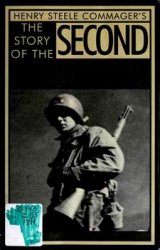Like all maps, those that portray political units involve judgments on the part of mapmakers,
and any map of Europe in 1450 is full of such judgments (see map 3). Beginning at
the western edge of continental Europe: England and France were in the last stages of the
Hundred Years War, with English holdings in France being slowly reduced to the town of
Calais. Maps often mark shifting boundary lines between “English” and “French” holdings
throughout the war, but these mask other changes that may ultimately be more important.
Any map showing what is now France at the beginning of the war in 1337 would probably
show solid lines between the great noble holdings – the duchies of Normandy, Burgundy,
and Aquitaine, the counties of Anjou and Provence. Though their rulers were generally
vassals of the king of France, they felt perfectly comfortable shifting their allegiance to
England, or to no one, and opposing the centralizing moves of the French kings. By the end
of the war in 1453, those lines are often shown as dotted or they have disappeared altogether.
Local allegiances and traditions still made great differences, but regional units such as
“Aquitaine” were increasingly understood as part of France, and not as its neighbor.
In England, internal political divisions may have seemed less marked than those in
France in the fourteenth century, but weak kings combined with warfare in the early
fi fteenth century to increase the power of feudal nobles. Their holdings were not as
independent as those of the strongest French nobles, but particularly those with holdings
along the borders of Wales and Scotland were quite independent, simultaneously
feared and relied on for border defense by the English monarchy. English nobles in
Ireland – some of whose families had been there for nearly three centuries – were even
more autonomous; though the English attempted to draw a sharp line between Anglo-
Irish and Gaelic territory and to prevent the mixing of the two populations, in reality
the border was more nebulous and cultural assimilation was quite common.
In the middle of Europe, there were “Germany” and “Italy,” off-hand designations
used by contemporaries (and by us) for large areas politically subdivided into hundreds
of different types of governmental units: kingdoms, counties, duchies, free cities, religious
states ruled by bishops, abbots, abbesses, or the pope, and tiny territories ruled
by lesser nobles. Even large-scale maps cannot capture the diversity of these units, for
jurisdictions were often interwoven and overlapping, so that areas or individuals might
be under the authority of – and pay taxes to – several political units simultaneously. In
the northern part of central Europe, these units were loosely joined together under the
title of Holy Roman Empire, with an emperor elected by a small group of secular and
religious leaders. They had chosen a series of generally weak emperors from various
noble houses through the fourteenth and early fi fteenth centuries, but in 1438 settled on
Albert II of the Habsburg family, whose family holdings included much of Austria and
various territories in southern Germany. Habsburgs were chosen as emperor almost
uninterruptedly from that date to 1806, though in 1450 their hold on the imperial offi ce
was certainly not assured, and the lines between the various states of the Holy Roman
Empire continued to be more solid than those separating the various parts of France.
The Italian peninsula was even more divided than Germany. The Holy Roman
Emperor had loosely controlled northern Italy in earlier times, but by the fi fteenth
century even this vaguely unifying force was gone. Northern Italy was made up of large
and small city-states, each ruled by a merchant aristocracy or a single individual; in
these often very wealthy states, one man or several hundred held actual power, though
a few, such as Florence, still retained the façade of broader republican governments
that existed briefl y in the thirteenth century. The Papal States stretched across central
Italy, and in the mid-fi fteenth century the popes were busy establishing family dynasties
and strengthening their military and political hold over this area. Southern Italy
(and often Sicily) comprised the kingdom of Naples, whose crown was contested by
France and Aragon. All of these states were jealous of each other’s power, so they established
alliances that shifted whenever one was perceived to be gaining strength, and
invented modern diplomacy with permanent representatives at each capital.
Like Germany and Italy, Spain in the mid-fi fteenth century was also a geographic concept
masking political disunity. The kingdoms of Aragon and Castile were the largest
units, but Aragon itself was made up of a group of separate principalities, and Navarre,
Portugal, and the Muslim state of Granada were completely independent. Each kingdom
had its own laws, courts, coinage, bureaucracy, and political institutions; even the reconquista
, the centuries-long push to conquer Muslim holdings, did not create cultural or
political unity. In northern Europe, the Union of Kalmar, created in 1397 under the rule of
Queen Margrete of Denmark, brought together the kingdoms of Denmark, Norway, and
Sweden under one monarch. As in Spain, each country retained its own laws, customs,
and administrative council. The Union helped provide mutual defense against German
power in the Baltic, though by the mid-fi fteenth century powerful Swedish nobles were
already rebelling against monarchs they perceived as pro-Danish.




 World History
World History









